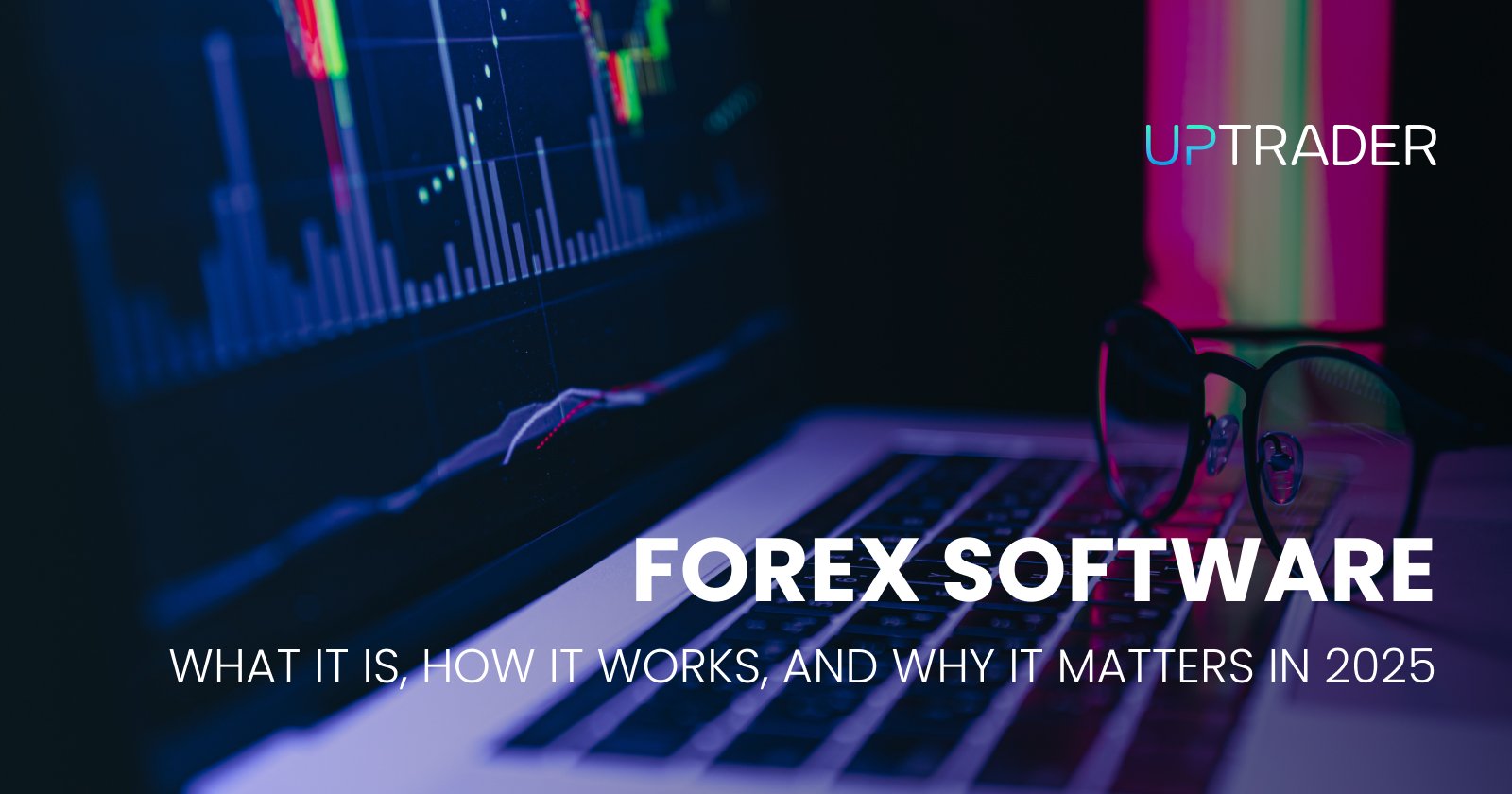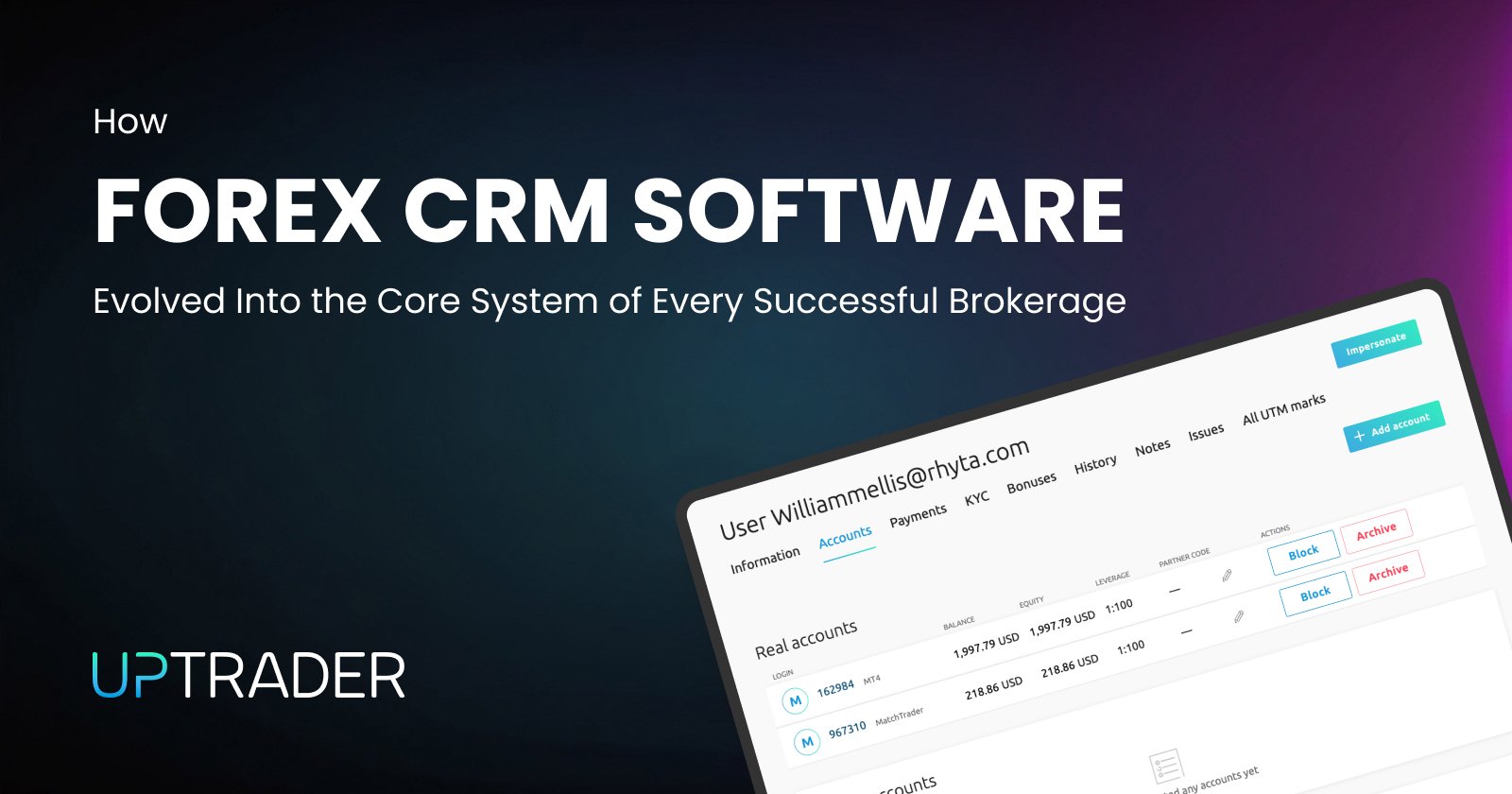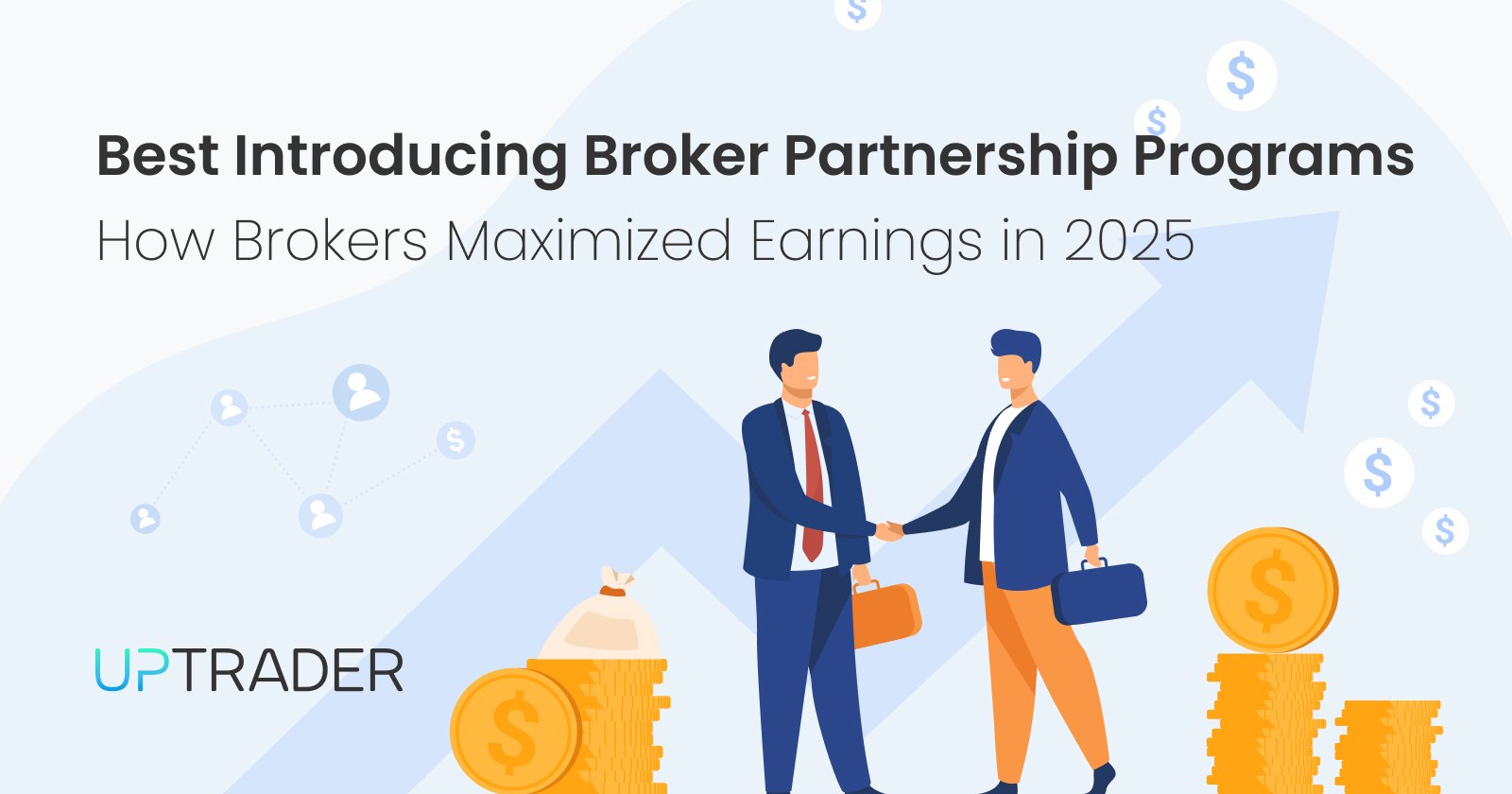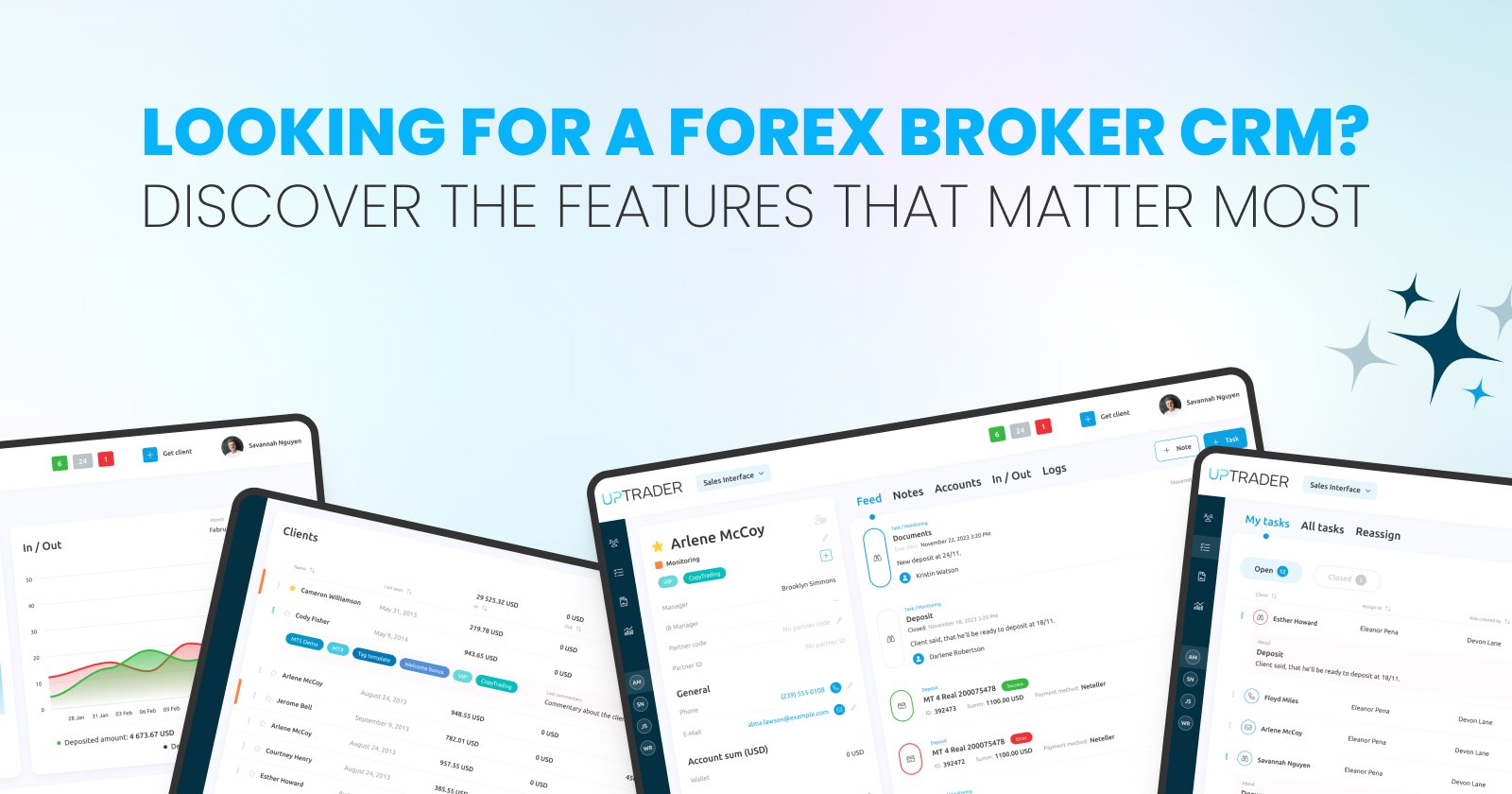Forex Software: What It Is, How It Works, and Why It Matters in 2025

Share this publication:
With daily transactions in trillions, the Foreign Exchange (Forex or FX) market is the most liquid and largest market in the world. At the center of this tremendous ecosystem, forex software tools exist, giving traders, brokers, and institutional investors the capability to execute trades, manage risks, and analyze data more efficiently. Forex traders need to comprehend how Forex Software operates, and its increasing significance as competition and technology rise in 2025.
This article aims to explain Forex software, its functions, the different available types, and its importance for modern trading.
What Is Forex Software?
To put in simpler terms, Forex software includes digital systems and applications that forex traders use to assist in trading-related tasks. These tools can be as simple as charting tools and order execution systems to complex algorithmic trading engines and broker customer relationship management (CRM) systems.
The purpose of Forex software is to:
- Help traders analyze currency pairs
- Execute trades automatically or manually
- Manage accounts and risk
- Provide real-time data and market news
- Facilitate broker operations such as client onboarding and compliance
In 2025, due to breakthroughs in AI, cloud, and machine learning, Forex software has become a necessity rather than a luxury.
Types of Forex Software
To truly understand Forex software, it helps to break it down into key categories based on user needs and functionality.
1. Trading Platforms
Undoubtedly, these are the most recognizable Forex industry tools. Users may trade, manage, and access real-time charts, as well as perform technical analysis on the Trading Platforms.
Examples are:
- Trading Platform 4/5: Continue to gain popularity in 2025 for both discretionary and algorithmic trading.
- cTrader: Known for its easy-to-use design and ECN execution.
- Proprietary platforms: Many brokers prefer to create their own platforms to have full control over user experience and feature sets.
Key features:
- Live market feeds.
- Custom indicators and drawing tools
- Backtesting and strategy optimization
- Expert Advisors (EAs) for automated trading.
2. Broker CRM and Back Office Solutions
Spending time during trade execution is just one of the challenges a broker faces. An equally important concern is managing clients, affiliates, compliance, and the rest of the operations. Forex CRMs have been created specifically in order to handle:
- KYC/AML processes
- Multi-tier partner programs
- Client retention
- Payment and withdrawal tracking
- Real-time reporting.
Popular Forex CRMs in 2025 allow affiliate and payment service provider (PSP) integrated trading platforms, which provide for comprehensive brokerage management.
3. Risk Management Systems
The most important concern for brokers and liquidity providers is the management of risk. Monitoring exposure, calculating margins, and managing the B-book and A-book order flow are all core functions of these systems.
Functions include:
- Real-time risk dashboards
- Trade reconciliation tools
- Aggregation and smart routing
- Stop-out and margin call alerts
4. Liquidity Bridge and Aggregators
Brokers maintain multiple connections with liquidity providers to obtain the best execution and pricing for their clients. A liquidity bridge is a type of software that connects the trading platform (like MT5) to one or several sources of liquidity.
Why it matters in 2025:
- Lower spreads
- Faster execution
- Better control over markups and routing logic
- Compatibility with Prime of Prime brokers
5. Trading Bots and Algorithmic Systems
In 2025, the use of algorithmic trading bots is at an all-time high. These software programs follow pre-coded rules and use AI to place trades automatically based on market conditions.
Advanced systems now:
- Use sentiment analysis
- Incorporate macroeconomic data
- Adapt to changing volatility levels
While such tools can increase efficiency, they also come with risk and require proper oversight.
How Forex Software Works
Different types of Forex software have their own specific intricacies, but there are a few foundational processes most systems share.
1. Data Input and Integration
Forex software collects several different types of data for integration and processing. The sources include:
- Market feeds or price quotes
- News and economic calendars
- Client trading behavior
- Regulatory database, and many more.
Application Programming Interfaces or APIs, which allow different software programs to communicate with each other, are common in the year 2025 for seamless system integration, or merging liquidity feeds.
2. Real-Time Processing
Modern Forex systems analyze incoming data streams as information is gathered, making real-time forex trading possible.
Timely forex data processing is critical; otherwise, traders may encounter slippage, missed entries, or compliance issues. Real-time data processing supports the following functions:
- Automated order execution
- Instant calculation of dynamic margins
- Interactive account dashboards
- Live snapshots of accounts
3. Automation and Intelligence
Order automation and KYC document approval are two critical processes AI has made possible.
Retention campaigns for anticipating user churn, market volatility-driven adjustments of spread, behavior risk exposure analysis, and many more are done by AI as well.
Forecasting and active decision-making based on historical data patterns has also been made possible with machine learning.
Why Forex Software Matters in 2025
Financial markets have always changed within the context of technological progress. In 2025, however, the main focus of trends in Forex Software are pointing to is different. This is relying on talk about these bold trends.
1. Competitive Pressure
Emerging markets like Africa, Southeast Asia, and Latin America are now gaining traction, and with new brokers comes instant competition. Traders expect mobile platforms and seamless payments, to name a few.
2. Regulatory Demands
Forex trading is subject to many international rules and regulations, which pose a challenge for brokers like strict openness in the segregation of client funds, anti-money laundering, etc.
Forex CRMs and compliance modules simplify Forex brokers’ workloads for them as well, reducing suspicion in financial crimes, efficient document storage for KYC, and many more.
3. Client Expectations
Older generations, particularly Millennials and Gen Z, expect rapid, personalized service, and Forex Software is a User Experience management tool. Modern Forex software aids traders with onboarding, training, and user retention.
Features like:
- Interactive tutorials inside trading platforms
- Personal trading coaches via AI chat
- Real-time account alerts via mobile
...are becoming the norm.
4. AI and Data-Driven Decision Making
Forex Brokers are gaining a competitive edge. These tools can:
- Identify top-performing affiliates
- Optimize marketing spend
- Forecast future trends in user behavior
For traders, AI helps filter noise from signals, offering smarter trade recommendations and reducing cognitive overload.
5. Security and Trust
Security is a top concern given the rise of cyberattacks and data breaches. Forex now offers support for:
- 2FA (Two-factor Authentication)
- Trade data encryption
- Cloud backups and other recovery options
Today, trust is essential, and by 2025, brokers will be evaluated on their cybersecurity measures as much as their spend.
Choosing the Right Forex Software
Strategically picking software as either a trader or a broker is the deciding factor for success. Pay attention to these tips:
For Traders:
- Prioritize platforms with swift execution times and streamlined interfaces, along with robust mobile applications.
- Do not use “black box” bots without any understanding.
- Ensure the tools you use allow for backtesting and risk management.
For Brokers:
- Focus on custom-made CRM and trading platforms instead of readily available ones.
- Pay attention to scalability: Can the software expand with your needs?
- Make sure there is adequate post-purchase support and training relative to the software features provided.
- Look into white-label options to accelerate the go-to-market strategy.
Conclusion and Final Thoughts
The Forex industry in 2025 is a hybrid of finance and cutting-edge technology. Software is no longer just a utility — it’s a strategic asset. Whether you’re managing a brokerage or building your trading career, having the right tools is essential to staying competitive, compliant, and profitable.
Forex software has evolved from simple charting platforms to intelligent ecosystems that manage everything from trades and clients to compliance and liquidity. Understanding its role and leveraging it effectively is what separates the leaders from the rest in today’s dynamic currency market.
If you're looking for a powerful and comprehensive Forex CRM system that covers all these essential features and more, UpTrader CRM is the solution for you. Ready to take your brokerage to the next level? Contact a consultant on our site today to schedule a demo and see how UpTrader CRM can transform your business!







